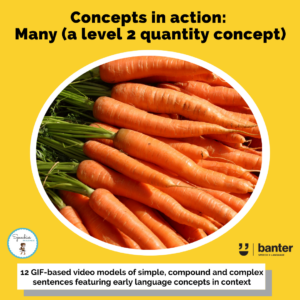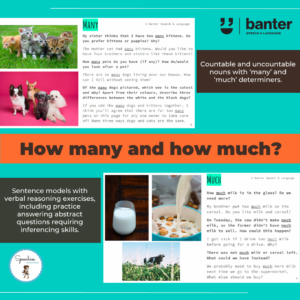-

$5.99 including GST
12 GIF-based video models of simple, compound and complex sentences featuring early language concepts in context.
The videos feature the Banter Boys and friends demonstrating foundational language concepts in a variety of ways. In this 17-page no-prep resource we focus on ‘many’, a level 2 quantity concept.
We also include tips, and hands-on activities for exploring concepts in the ‘real world’ with your child.
-

$6.99 including GST
Some nouns are considered ‘uncountable’ (indivisible) or ‘mass’ nouns, and do not take a plural form, e.g. water, oil, sand, flour, rice, silver, and excitement.
For countable nouns, we use the determiner “many” to denote a large number and use the plural form of the noun (e.g. “many umbrellas”). For uncountable nouns, we use the determiner “much” to denote a large amount or degree; and the determiner can only be used with a singular noun (e.g. “much sand”).
Errors with ‘many’ and ‘much’ persist for many young school students, and require much practice to correct – especially for many students with a history of language and learning disorders, and for many students learning English as an additional language.
This 23-page resource is designed to help, while also working on verbal reasoning tasks.


